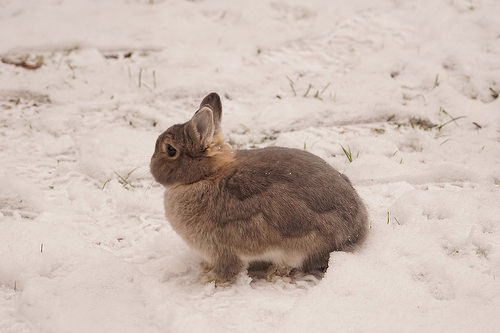ANIMALS HAVE STOPPED TURNING WHITE FOR WINTER IN ALARMING CLIMATE CHANGE TREND
Wearing a white coat in the winter will help you blend into the background only if there’s enough snow in said background. But with climate change making snowy winters shorter and rarer, white animals have to re-adapt.
Snowshoe hares, like ermines and arctic foxes, famously have two coats. To blend in with the ground in the warmer months, snowshoe hares sport brown fur. In the winter, they turn white to camouflage with the snow. It’s harder for predators to spot an animal that matches the background in all seasons.
This technique is a wonder of evolution, but climate change is interrupting this process. With warming temperatures, there’s less snow in the winter, and white hares on unusually snow-less ground stick out to predators, like tasty marshmallows on mud.
Research recently published in the Canadian Journal of Zoology explained the new phenomenon. Biologists studying in Pennsylvania and in the colder Yukon compared the habits of their respective snowshoe hare populations, and found the distinct populations act and look very differently. Pennsylvania hares have thinner coats and don’t seek out warmer areas. Three of the 70 Pennsylvania hares captured didn’t even grow out their winter coats, staying the same color all year long.




